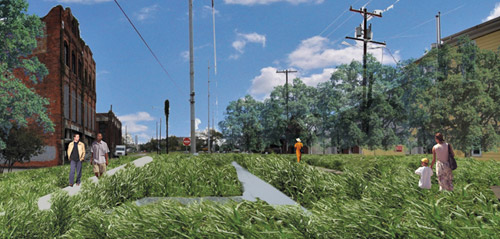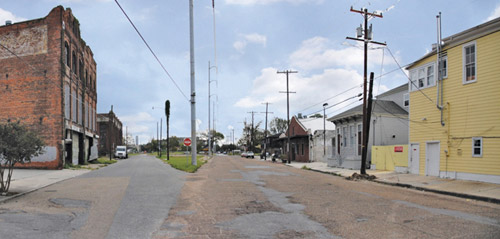Working with Water
Learning Objectives:
- Discuss the relationship between climate change and rising sea levels.
- Describe landscape and infrastructure strategies that help coastal cities adapt to sea-level rise.
- Explain strategies that help make buildings more resistant to flooding.
- Define key terms relevant to flood-resistant design.
Credits:
As the warmest decade on record drew to a close, representatives from the more than 190 countries attending the United Nations Climate Conference held late last year in Cancun, Mexico, made just halting progress in addressing the root causes of climate change. The conference agreements, although a step forward, set only modest limits on greenhouse-gas emissions. But as the symptoms of a warmer world become more apparent, the design community has begun to consider the consequences of climate change. Looming large among these symptoms is sea-level rise, a dynamic that has the potential to radically change the character of coastal areas throughout the world.
If the weight of the science doesn't hit home, then consider that 55 percent of private real-estate insurers are now limiting new policies in mid-Atlantic coastal areas, says Wetlands Watch, a Virginia-based conservation organization. One top-10 company will no longer insure properties within one mile of the coast. Also consider that more than 30 U.S. military installations are already facing elevated risk from rising sea levels, according to the Pentagon's most recent Quadrennial Defense Review, issued in February 2010.
The fluctuating seas
The earth has been warming for thousands of years. This very gradual warming trend took a steep turn upward around the start of the industrial revolution - a phenomenon that many researchers link to escalating carbon dioxide levels. Scientists are finding that the rate of sea-level rise is increasing as well. NASA satellite measurements show that the last decade's rate of increase is almost double that of the last century. Seas are currently rising about 1⁄8 inch per year.
 |
 |
For an especially flood-prone part of New Orleans, Waggonner & Ball has proposed transforming the streetscape into a parklike environment that would incorporate water as an amenity. Image: Courtesy Waggonner & Ball |
Experts believe that much of the rise during the 20th century can be attributed to thermal expansion. Acting as the earth's heat sink, the oceans expand like the mercury in a thermometer. But the engine behind the future threat is melting land-based ice. Tremendous deposits of ice, nine-tenths of the earth's freshwater, lie stored atop Greenland and Antarctica. The last time there was a major rise, 120,000 years ago, the sea level rose around 18 feet above current levels. But most climate scientists expect the rise this century to be in the range of 3 to 7 feet. The immediate concern is that higher sea levels will allow storm surges to inundate coastal areas more frequently, according to several recent scientific and engineering studies.










